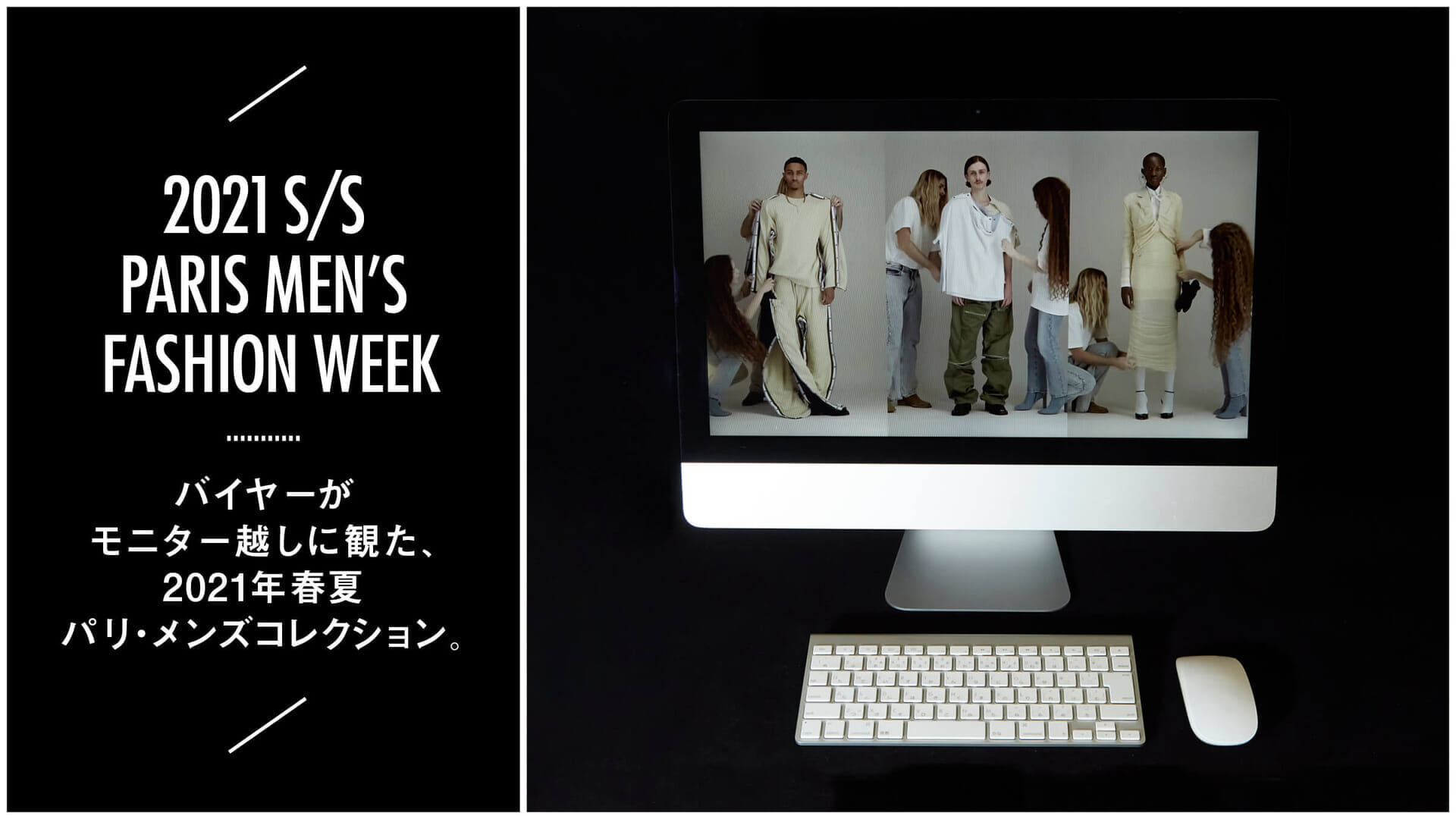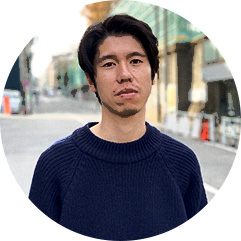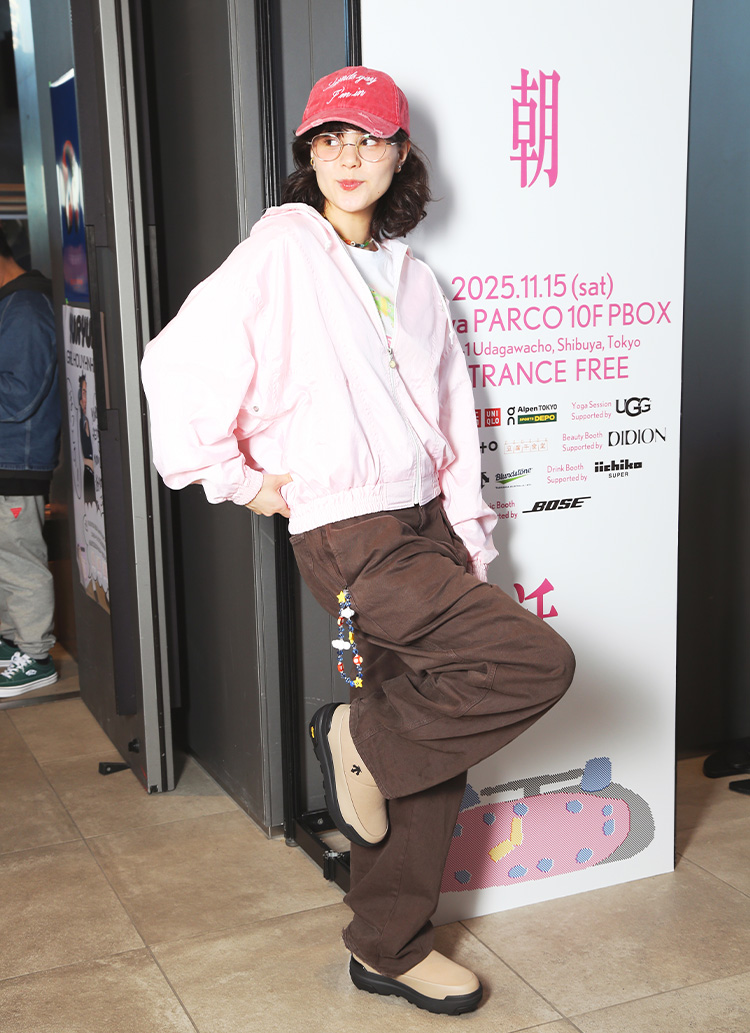BUYER 06 It would be meaningful to promote the movement in Japan and share it with the rest of the world.
PROFILE

Co-founder and buyer of Container Store, which opened simultaneously in Osaka and Hiroshima in 2016 . Deals in domestic brands, vintage clothing, and up-and-coming brands from abroad . opened the Tokyo store in 2006.
www.contenastore.com
What was your impression of Digital Fashion Week?
While physical shows allow viewers to see the world directly, they are also given a digital frame through the filter of a terminal screen, which may be perceived as limiting the range of expression. However, there is no need to stick to a runway show format when presenting a collection in the first place, and brands that take advantage of the advantages and characteristics of the digital format are indeed impressive. On the other hand, I believe that physical fashion shows are also necessary. For example, it is not the same as saying that artists only need to broadcast their live performances. However, many people must have thought that digital fashion shows are also quite good. I think the idea of striking a balance between the two will take root.
Q. Which brands caught your attention from that perspective as well?
Comme des Garçons JUNYA WATANABE MAN" was not a video presentation, but it was a book of photographs of Japanese craftsmen and other artisans at or near their workplaces, something that cannot be done at a runway show held in a single location. We made clothes for people who have traditional craftsmanship in Japan, dressed them, and photographed them. The method itself is simple, but I sympathized with the significance of the presentation under these circumstances and the fact that "local" is being communicated from Japan to the world.
Comme des Garçons JUNYA WATANABE MAN" did not participate in Paris Men's this time, but presented its collection in a visual book shot by photographer Keizo Kitajima. The models included a sushi chef, an auto mechanic, a swordsmith, and a professional fly fisherman.
Walter Van Beirendonck, perhaps comparing the postwar period to the Corona disaster, was inspired by the "Théâtre de la Mode" haute couture show held in 1945-46, when supplies were in short supply after World War II, and he dressed dolls about 70 cm long. . which also could not be done at the show. I found it interesting from a sustainability perspective that the amount of fabric needed to produce the samples was kept to a minimum.
Walter Van Beirendonck was inspired by the idea of presenting designs in miniature (Théâtre de la Mode), which was used by French couturiers as a solution to the fabric shortage immediately after World War II. The company's founder, Eli Essenberger, and his students created the dolls.
Many of the Y-Project's clothes can be worn two or more ways, so the runway alone is not enough to showcase the diversity of the clothes' styling. The three separate screens, each with its own style changes, were a strong embodiment of the brand's symbolic image of continuous, rhythmic design. The idea of reusing past ideas and products, as in the case of "Evergreen," is not just "rehashing" or "reproduction," as the consumption and cycle of fashion is too fast nowadays. I believe that the idea of reusing past ideas and products like "evergreen" will give them new value that is not merely "rehashed" or "reproduced.
Have there been any changes in the buying process?
After seeing the actual samples, we take them home, listen to the opinions of the entire team, and discuss them with our co-chair Sugita until we are satisfied with the final order. As we listen to the opinions and questions of the entire team, questions and points to be confirmed that we did not notice at the exhibition inevitably come up later. We would thoroughly check with the brand side about points of concern, but until now, the information we received was often vague. This time, the brand had a system in place, so we were able to get a detailed and accurate answer immediately. In this respect, it may have been easier to place an order.
We basically try to buy what we want and what we think we would like to wear, but in many cases, online ordering was like online shopping for us. Of course, there are size and texture issues that cannot be determined without seeing the actual garment, but we saw this as a positive link between our buyers' ordering environment and the environment of our customers, who in this day and age are increasingly using online shopping. We also feel that there is a demand for products that catch the eye when picking for an online order. Of course, we did not rely solely on the visual aspect of the order, but we also considered the repercussions of such an order and tried to balance the two.
Do you have any new brands that you will carry starting with the 2021 spring/summer season?
In terms of aggressive purchasing, I would say Eli Russell Linetz. Looking back over the past few years, I feel that it has become a "trend" to introduce new brands, but I think now is the right time to become more active in this area.
Is there a reason why so many brands continue to operate?
I have been doing this for a long time, but I have come to think more and more that I want to have a long-lasting relationship with brands that I can truly identify with. I have the impression that more and more of our customers are buying clothes not because of the design, but because they empathize with the background and the philosophy of the creator. I have the impression that the number of people who only wear this brand is increasing, including our staff. At the same time, I am a bit skeptical about the situation where imports are still the majority. I think it would be meaningful for us to strengthen our relationship with designers who are close to us in Japan, and at the same time, to promote the "local" movement in Japan to the rest of the world. We also want to accelerate direct connections with the worldviews of brands that we have been doing business with, such as TTT_MSW and DAIRIKU, with whom the designers are friends and of the same generation, and with the artists they are connected with. . It is difficult to organize events that attract people at the moment, but we are planning to do what we can do at our store.









